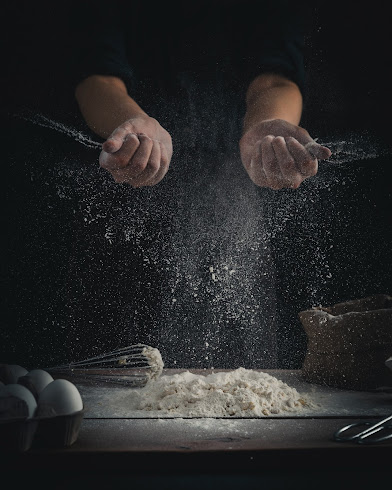Steffen Arctander was born in Denmark on September 9, 1919. He is best known as the author of Perfume and Flavor Materials of Natural Origin, which was independently published in 1960. His birthday is the perfect time to reflect on his unique and atypical career.
Arctander was one of the founders of the Society of Cosmetic Chemists of Denmark (Dansk Kosmetic-Kemisk Selskab) in 1955, when he was chief chemist and perfumer at Co-Ro Manufacturing (the company was focused on flavor essences for mineral water and ice cream during his tenure there).
He moved to the United States two years later to join the perfume and essential oils division of the Colgate-Palmolive Company. He created the first college-level course in perfumery at Rutgers University the same year (1957). Rutgers currently offers four courses (master's degree level) related to fragrance and personal care, which is a testament to Steffen Arctander's legacy.
The formation of International Flavors and Fragrances (IFF) (the result of a merger between Polak and Schwarz, and Van Amerigen and Haebler in 1958) led to Arctander's role as perfumer and head of the odor quality control department at IFF in 1960.
Four years later, Steffen Arctander was a contestant on To Tell the Truth, a popular game show that aired on WCBS-TV and taped in New York City. It was the closest Arctander got to fame as a member of the highly secretive flavor and fragrance industry. He was working for IFF at the time.
Arctander's success was shaped by interdisciplinary and autodidactic qualities that magnified his life's purpose on and off the lab bench. He could work on a mint toothpaste formula with the same interest, skill and finesse that he applied to the creation of Blue Diamond perfume* (a personal project).
Job titles have a way of confining accomplished employees with more than one area of scientific expertise. It's hard to imagine this wasn't the case for Arctander. He understood and applied what it took to create a chemically balanced fine fragrance (perfume), a functional fragrance (e.g. scent used in soap, lotion, detergent) and a functional flavorant (e.g. beverages, toothpaste, extracts).
What consumer products possessed the mark of his fragrant and flavorful handiwork? We'll never know or infer, as non-disclosure agreements are a permanent roadblock.
Arctander's expertise in natural raw materials and chemistry allowed him to work across product types and by extension, disciplines. Hands-on experience in the field and the lab gave him latitude in his professional life, and a meaningful legacy after he died on October 29, 1982.
Perfume and Flavor Materials of Natural Origin is more than a well-researched handbook; it's the essence of Steffen Arctander and as close as the reader will get to his biography. This is evident in content that bookends the monographs on natural raw materials.
The beginning and end of the book is where the reader learns about the author's approach to fragrance creation and categorization, as well as international travel focused on existing and novel aromatic ingredients. The travel portion is scientifically informed, diaristic fieldwork.
Happy Birthday, Steffen Arctander. Perhaps we'll know more about you on the anniversary of your birthday in 2023. We have history and memories for now.
Notes & Curiosities:
The image of Steffen Arctander that accompanies this post is from Volume 8, Number 3 edition of the Journal of Cosmetic Science. The journal was published in 1957 and includes a wonderful article about Florence E. Wall, an award-winning female chemist.
Steffen Arctander joined the British Intelligence Service during WWII, where he applied chemical expertise in explosives against the Nazis.
*Steffen Arctander formulated a perfume called Blue Diamond that was released in 1979. There is little of it in circulation. An experiential account of its olfactory qualities is revealed in perfumer Ayala Moriel's Smelly Blog. BTW: Elizabeth Taylor's White Diamonds (perfumer Carlos Benaim, IFF) was released in 1991 and isn't related to Arctander's perfume.












